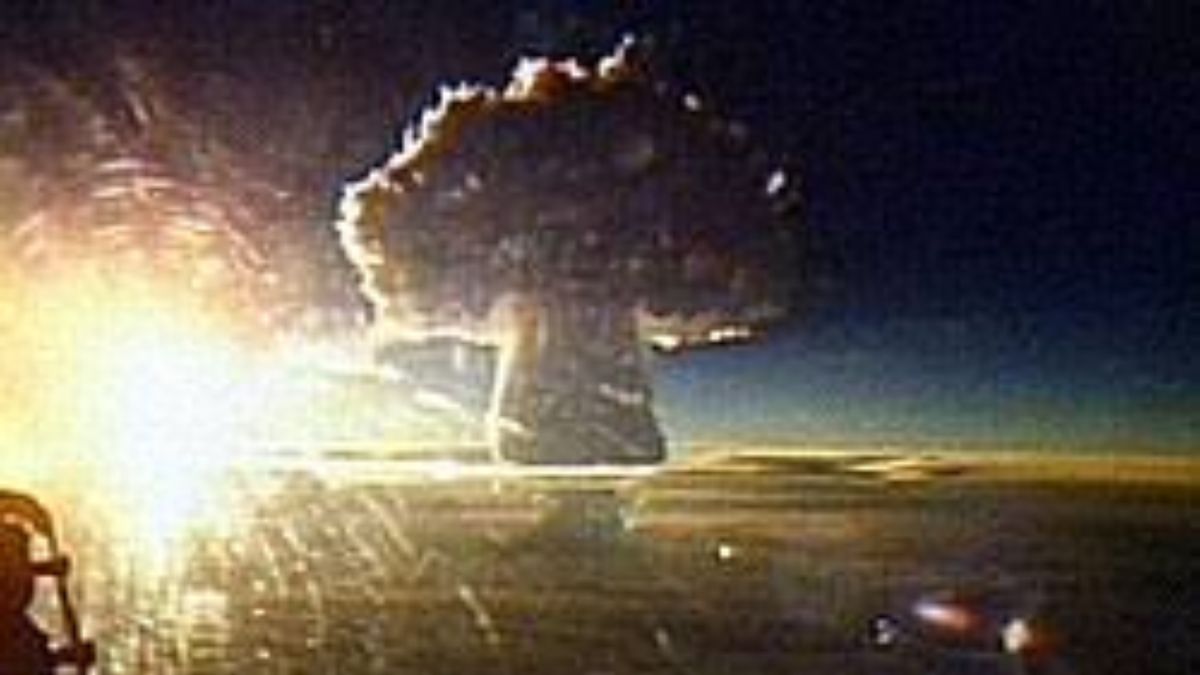The Soviet Union detonated the Tsar Bomba, the most powerful nuclear weapon ever tested in human history, on October 30, 1961. This marked a chilling demonstration of Cold War military might.
If you are a history geek who loves to learn about important events from the past, Firstpost Explainers’ ongoing series, History Today will be your one-stop destination to explore key events.
On this day in 1973, the Bosphorus Bridge was inaugurated in Istanbul, Turkey. This marked a historic engineering and cultural milestone.
Here is all that took place on this day across the world.
Tsar Bomba, the biggest bomb in history, was detonated
The Soviet Union detonated the Tsar Bomba , the most powerful nuclear weapon ever tested, on October 30, 1961. The explosion took place over Novaya Zemlya, a remote Arctic archipelago, and marked a chilling demonstration of Cold War military might.
Codenamed “Ivan” by its creators and referred to in the West as the Tsar Bomba, the hydrogen bomb had an estimated yield of 50 megatons of Trinitrotoluene (TNT), equivalent to about 3,800 times the power of the bomb dropped on Hiroshima. Originally designed to produce 100 megatons, its yield was deliberately reduced to minimise radioactive fallout. Even so, the blast was so enormous that it shattered windows over 900 kilometres away and produced a mushroom cloud that soared more than 60 kilometres into the atmosphere.
The explosion’s shockwave circled the Earth three times, and the seismic tremors registered even on distant monitoring stations. The bomber that dropped the device, a modified Tu-95, barely escaped destruction, managing to fly to safety after being buffeted by the explosion’s shockwave despite being over 40 kilometres away when the bomb detonated.
Tsar Bomba was both a technical and political statement. Soviet Premier Nikita Khrushchev ordered the test to showcase the USSR’s nuclear superiority amid rising tensions with the United States during the Cold War. However, the weapon’s sheer destructive capacity was deemed impractical for actual military use.
Impact Shorts
More ShortsThe detonation of Tsar Bomba remains one of the most terrifying reminders of humankind’s ability to annihilate itself. Though it never became an operational weapon, its test underscored the devastating consequences of nuclear escalation and spurred international calls for arms control.
The Bosphorus Bridge opened for first time
The Bosphorus Bridge (now officially called the 15 July Martyrs Bridge) was inaugurated in Istanbul, Turkey, on this day in 1973. The bridge connected Europe and Asia for the first time in modern history, symbolising the unification of continents and the modernisation of Turkey.
The inauguration coincided with the 50th anniversary of the founding of the Republic of Turkey, making it a moment of immense national pride. Turkish President Fahri Korutürk presided over the ceremony, while thousands gathered to witness the opening of a structure that redefined Istanbul’s skyline and transportation network.
Stretching 1,560 metres (5,118 feet) long and 33 metres (108 feet) wide, the bridge was the fourth-longest suspension bridge in the world at the time and the longest outside the United States. Built by a British-German consortium, the bridge’s construction began in 1970 and took just over three years to complete. Its two towering pylons, rising 165 metres above the water, became iconic symbols of Turkey’s growing industrial and technological prowess.
Beyond its architectural marvel, the Bosphorus Bridge transformed Istanbul’s urban landscape. It provided a vital link between the European and Asian sides of the city, drastically reducing travel time and boosting economic integration. The bridge also symbolised Turkey’s dual identity — rooted in Asia yet aspiring toward Europe — and its ambition to bridge not just geography, but cultures and civilisations.
This Day, That Year
In 1974, Muhammad Ali knocked out George Foreman in the “Rumble in the Jungle,” regaining the world heavyweight boxing title.
Emperor Nicholas II issued the October Manifesto, bringing the end of unlimited autocracy in Russia on this day in 1905.
)